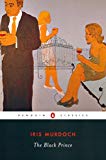
The Black Prince is the story of London author Bradley Pearson's affair with rival and friend Arnold Baffin's daughter, Julian. The affair ends in disaster and in Arnold's murder at Bradley's hands. The narrative then progresses into a postscript in which the characters themselves reflect on the novel. The novel's name is an allusion to Hamlet, which is itself featured prominently during the course of the novel and discussed at length by the characters.
Chief amongst Iris Murdoch's influences for this novel is the Shakespeare play Hamlet. It is openly referenced and discussed throughout, especially by Bradley. It is noted in the Post-Scripts that Bradley Pearson shares initials with the Black Prince, the title of Pearson's fictional as well as Murdoch's real work. Also present is the influence of Freud, especially through the frequent sexual imagery centred on recurrent references to the phallic Post Office Tower. Bradley's possible proxy admission of homosexuality is made possible through his seeming self-identification with Shakespeare throughout his narrative, and in his claiming both Hamlet and Shakespeare were homosexual. It is strengthened further by the moments in the book where he finds himself attracted to Julian, during each of which her gender is made ambiguous.
The final of these is when he finally achieves sexual arousal, having previously been unable, when Julian has dressed herself as Hamlet. These themes are discussed by Francis, himself a homosexual, in the Post-Scripts. It is also notable that the two characters Bradley has achieved intimacy with, Julian and Christian, are not clearly female in characterisation or name. An attempted seduction by Rachel, a more traditionally feminine character, is described passionlessly by Bradley's narrative.
Subtler Ancient Greek influences are seen in Bradley's quest for a pseudo-Platonic perfection in his writing and his purported Asceticism.
Already have an account? Log In Now